clonal
Showing 49–60 of 136 results
-
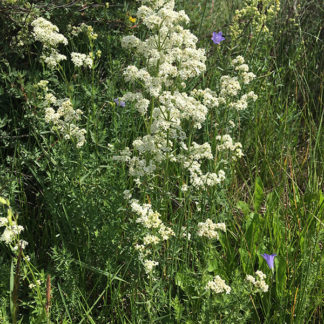
Galium borealis / northern bedstraw
- teeny 4-petaled white flowers in small to large clusters
- two pairs of opposite leaves in a whorl around the stem
- linear leaves - like rosemary
- smooth stems... not hairy or sticky like other bedstraws
-
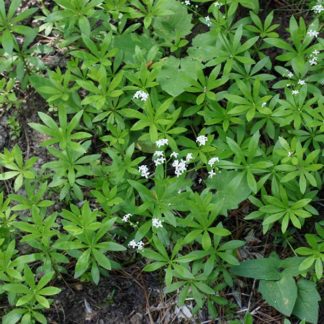
Galium triflorum / fragrant bedstraw
- low, herbaceous plant on forest floor
- whorls of thin, pointy leaves - 6 per whorl
- teeny, 4-petaled white flowers in groups of three
-

Gentian affinis / pleated gentian
- brilliantly blue, funnel-shaped flowers
- petals (lobes) pointed, joined by ragged plaits
- flowers in clumps or singly at tops of stems
- leaves lanceolate and opposite on square stems.
- found in a variety of wet sites
-
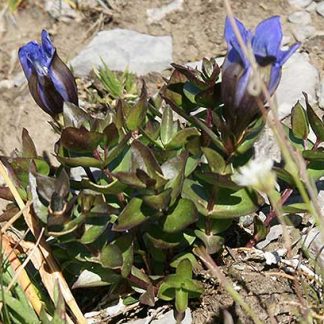
Gentiana calycosa / explorer’s gentian
- opposite, sessile leaves on unbranched stems; clonal
- deep blue funnel-shaped flowers with white throats and yellow spots
- 5 pointed petals with fringed pleats between them
- in wetter areas at higher elevations
-
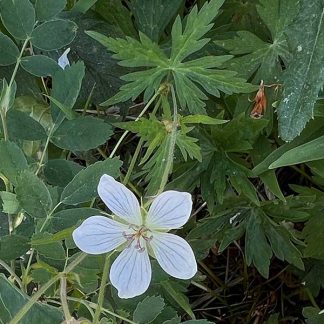
Geranium richardsonii / Richardson’s geranium
- white, or sometimes pink-ish, flowers
- non-sticky stems
- bee and butterfly pollination
- exploding seed capsules
-

Geum triflorum / prairie smoke
- among the earliest bloomers in the spring
- clusters of nodding reddish, pink, maroon or purple flowers
- flowers in groups of 3
- distinctive fruit - like silvery-pink or mauve "troll dolls"
- in large populations, fruiting plants look (sort of) like smoke
-
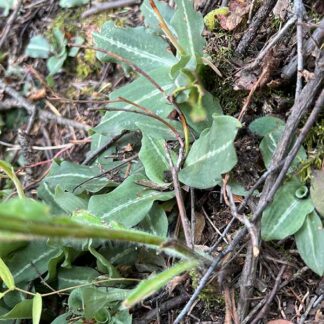
Goodyera oblongifolia / western rattlesnake plantain
- basal rosette of blue-green leaves with a white midvein
- single, leafless inflorescence stem
- greenish-white, stalkless flowers, often in a spiral
- the flowers have a hood, a short, pouch-like lip, and 2 flaring sepals
- usually found on the floor of coniferous forests
-

Hackelia patens / spotted stickseed
- small (but not teeny) white, 5-petaled flowers with delicate blue stripes at bases
- stamens arising from a "hole" in the middle of the flowers where petals are fused
- usually around sage, in early spring
- fruits are obnoxious - but small - burs (nutlets) that stick to everything
-

Helianthella uniflora / little sunflower
- short (for a sunflower)
- a single yellow, sun flower at the top of a hairy stem
- flowers are only 2-3 inches across
- leaves generally opposite with 3 prominent veins
- exposed on hillsides; shallow, but well-drained soil
-
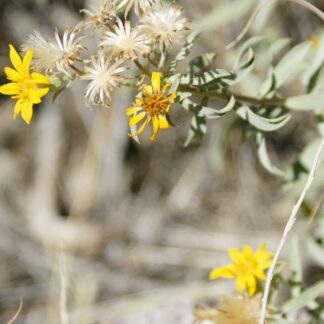
Heterotheca villosa / hairy goldenaster
- yellow composite with 10-20 ray florets, orange-brown disk
- hairy leaves and stems
- blooms throughout season, often densely
- disturbed and challenging habitats
-

Hieracium aurantiaca / orange hawkweed
- orange dandelion-like flower
- petals square ended with small notches
- hairy leaves, stems and involucres
- found in many habitats, sometimes in excess
-
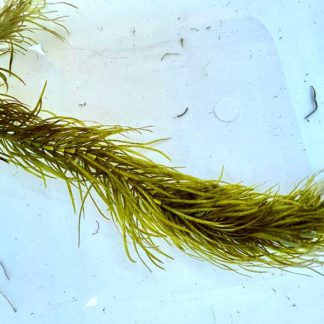
Hippuris vulgaris / common mare’s tail
- two possible forms - emergent and submerged
- submerged looks like a tail... thick with whorls of long-ish leaves
- emergent looks like Equisetum gone wild... whorls of many leaves
- both forms may be present
- mostly in river backwaters or small streams running through the fen
Showing 49–60 of 136 results